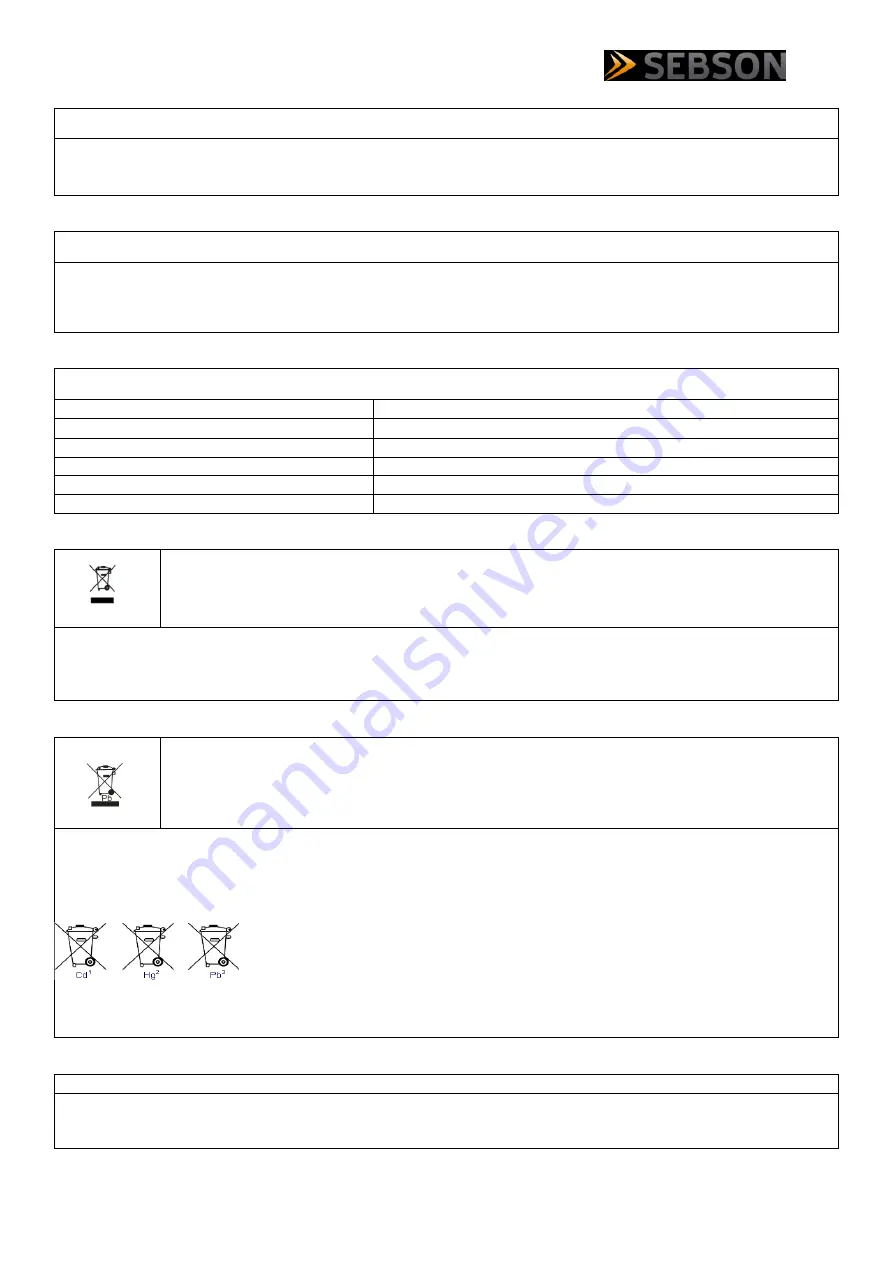
15
Behavior in case of fire:
In case of fire, go outside immediately and call the fire brigade for help! Do not waste time by putting on clothes or
carrying personal belongings. Inhaling the dangerous smoke gas will cause severe damage to your body, which can
lead to unconsciousness and subsequent death!
Further fire protection measures:
Creation of an escape plan
Fire extinguisher and fire blanket
Operate open fire e.g. lighted candles only under adult supervision
Use electrical devices with automatic switch-off
Technical Data:
Operating voltage:
9V DC
Battery type:
6LR61 9.0V Alkaline
Energy consumption:
<10μA (Stand-By), 30mA (Alarm)
Alarm Volume:
≥ 85dB (A) within 3m
Smoke sensitivity:
0,085-0,1377dB/m
Temperature region:
5°C – 40°C
Disposal note:
This product may not be disposed of with household waste. At the end of its useful life, the product must be
returned to a point of acceptance for the recycling of electric and electronic device. Please ask your local
municipality for the point of acceptance! As the devices contain valuable recyclable materials, they should be sent
for recycling, in order not to harm the environment or human health from uncontrolled waste disposal.
Proper disposal of batteries and accumulators:
Batteries and rechargeable batteries may not be disposed in the household waste. The end-consumer are legally
obligated to the return of all used batteries and/or accumulators. After usage you can return batteries and / or
accumulators gratuitous in the sales point or in their direct vicinity (for example at municipal collection points and
trade). Otherwise, you can also return the batteries and / or accumulators by post to us.
Batteries and / or accumulators which contain harmful substances are marked with the
symbol of a crossed-out waste bin and may not be disposed of with household waste.
Under the dustbin symbol is the chemical name of the harmful substance - in the
example below - "CD" for cadmium, "Pb" stands for lead, "HG" for mercury.
If not disposed of properly, the substances contained in the batteries can cause health and environmental hazards.
These dangers are averted by the separate collection and proper disposal of used batteries.
Cleaning:
Clean the housing regularly from dirt, dust or cobwebs! Use a vacuum cleaner with a soft suction brush or a soft
cleaning cloth. In order for the unit to function properly, the housing, especially the air slots, should always be free of
dirt! In order not to damage the product, it is essential to avoid water penetrating into the housing! Never clean the
















































